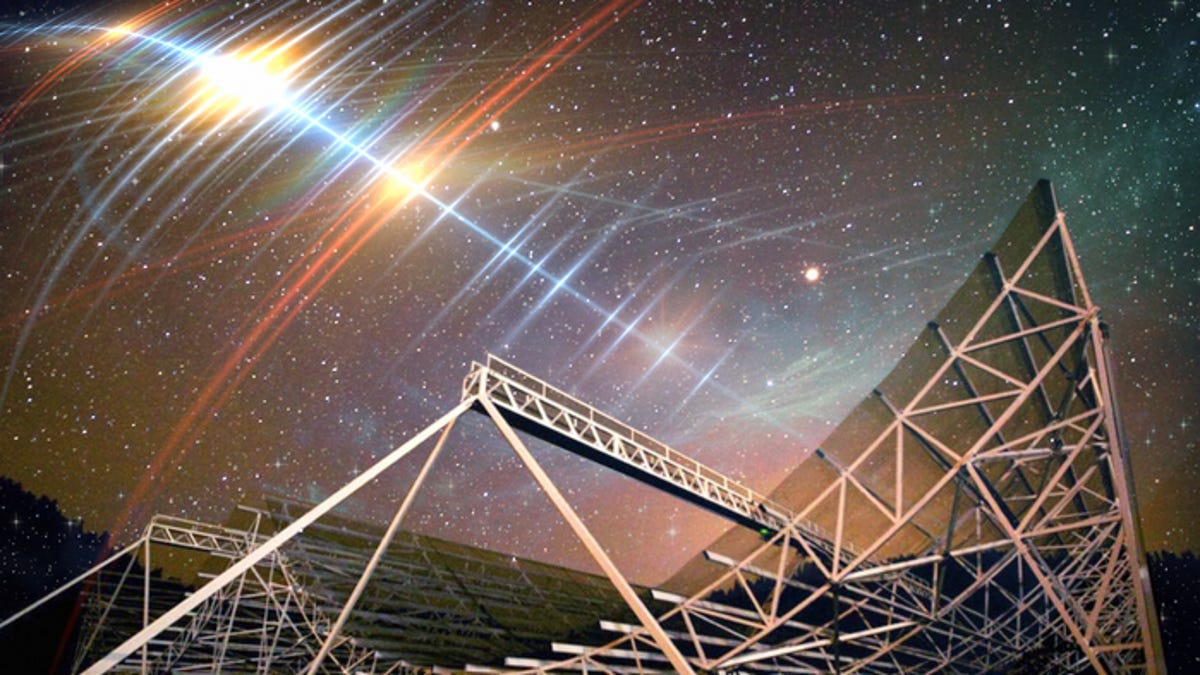Deep Space Signal May Be a Loud Radio 'Heartbeat' From a Neutron Star 'on Steroids'

The large radio telescope Chime that picked up the FRB.
What's happening
Astronomers have recorded the longest-lasting fast radio burst, or FRB, yet from a distant galaxy.
Why it matters
The powerful burst of radio waves could help solve many mysteries of the cosmos, including the origins of FRBs themselves.
Among the newer mysteries of the cosmos are fast radio bursts, or FRBs: intense, bright blasts of radio waves from the other side of the universe that typically last just a few milliseconds. Now scientists have detected the longest-lasting FRB yet, which resembles something more like a celestial pulse than a fleeting alien blip.
"It was unusual," Daniele Michilli, a researcher at MIT, recalled in a statement. "Not only was it very long, lasting about three seconds, but there were periodic peaks that were remarkably precise, emitting every fraction of a second -- boom, boom, boom -- like a heartbeat. This is the first time the signal itself is periodic."
Though three seconds may still seem fleeting, it's about a thousand times longer than the typical FRB. Within that short timeframe, the signal would peak every fifth of a second in a clear pattern.
"There are not many things in the universe that emit strictly periodic signals," explains Michilli. "Examples that we know of in our own galaxy are radio pulsars and magnetars, which rotate and produce a beamed emission similar to a lighthouse. And we think this new signal could be a magnetar or pulsar on steroids."
It makes sense that the source of the signal would be something mind-bendingly powerful like a neutron star. Pulsars and magnetars are both types of neutron stars, which are the extremely dense collapsed cores of giant stars that spin rapidly in deep space while emitting periodic blasts of energy.
In this case, those bright blasts likely traveled several billion light-years from a distant and ancient galaxy to be picked up by the Canadian Hydrogen Intensity Mapping Experiment, or Chime, a special type of radio telescope in British Columbia.
The signal is labeled FRB 20191221A and a paper on the discovery authored by the Chime/FRB Collaboration and dozens of co-authors is published in this week's issue of the journal Nature.
We've known about the existence of FRBs only since 2007, and so far FRBs that repeat or demonstrate any sort of pattern have been quite rare.
Deepening the mystery around FRB 20191221A is the fact that the signal looks to be about a million times stronger than the radio bursts we'd expect to see from pulsars and magnetars in our own galaxy. This could be because it came from some monster object in the deep cosmic past that's normally obscured, or perhaps a more typical object just threw off a onetime series of remarkably brilliant bursts for an unknown reason.
"This detection raises the question of what could cause this extreme signal that we've never seen before, and how can we use this signal to study the universe," Michilli says. "Future telescopes promise to discover thousands of FRBs a month, and at that point we may find many more of these periodic signals."
Those signals can be used as tools to investigate even bigger mysteries, like the expansion of the universe and the life cycles of stars.

